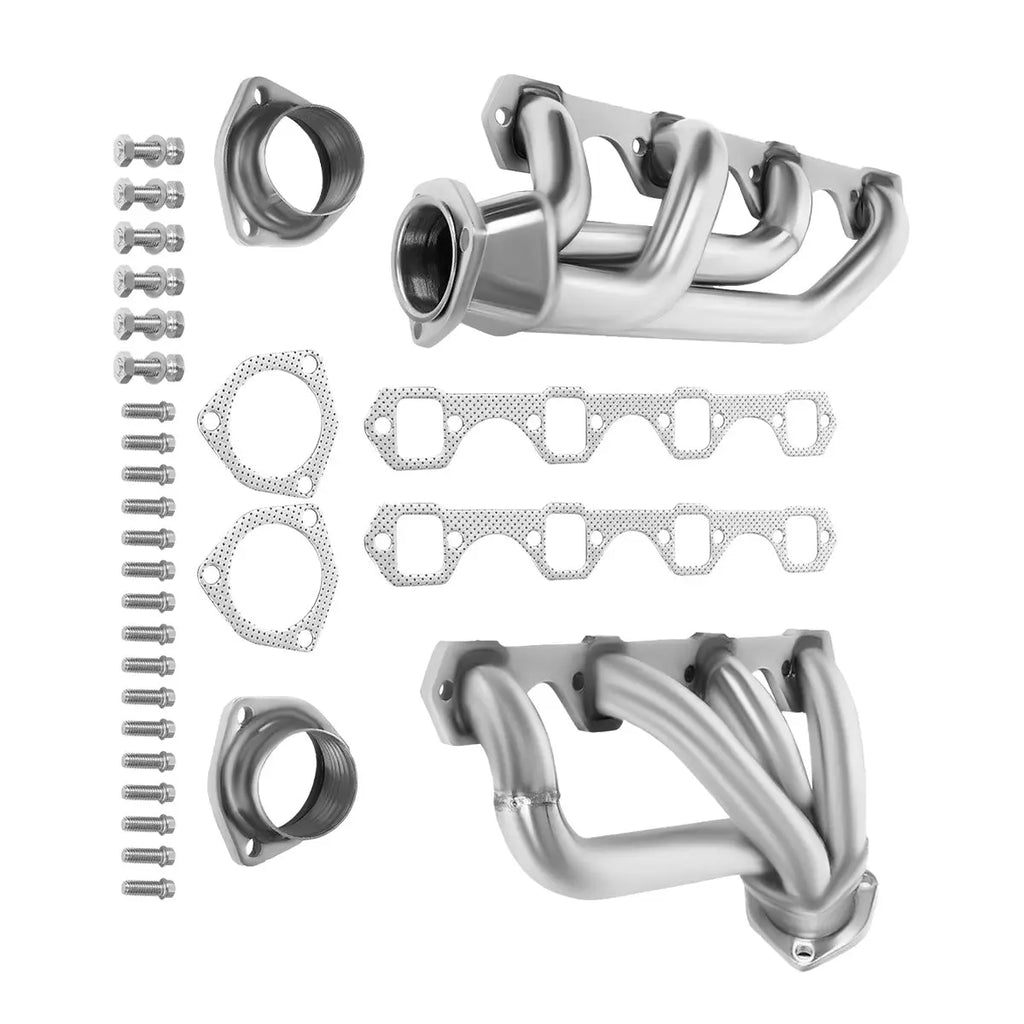
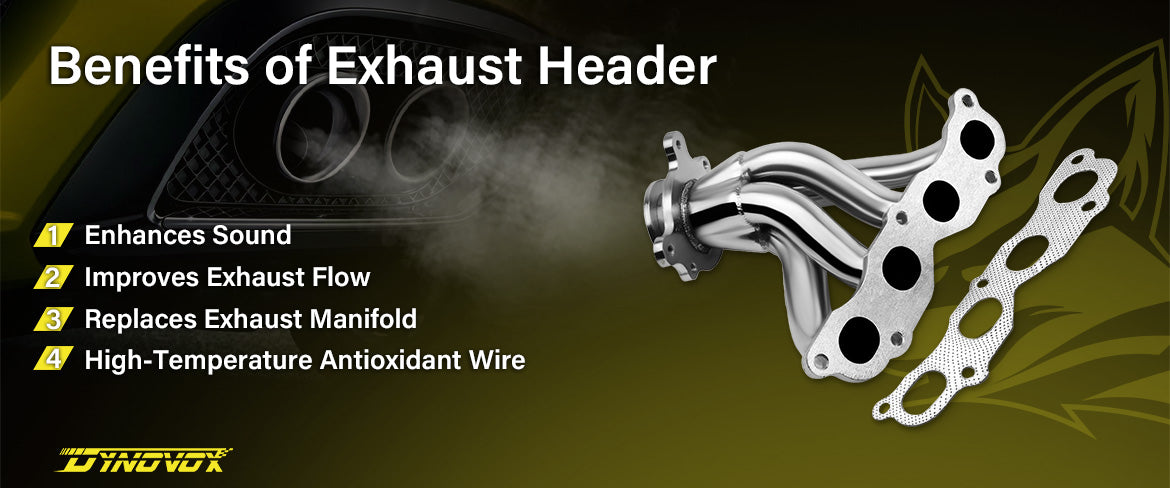
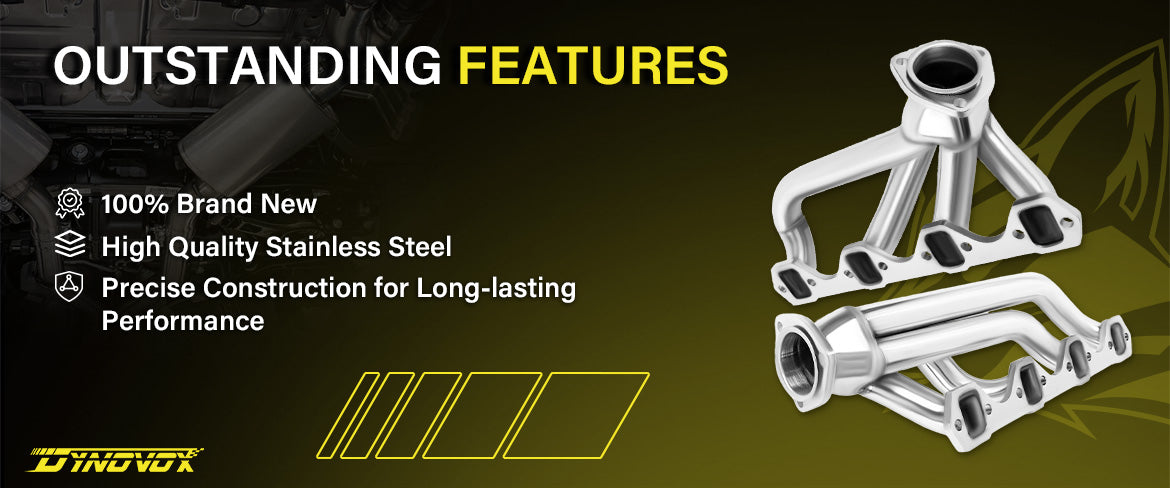
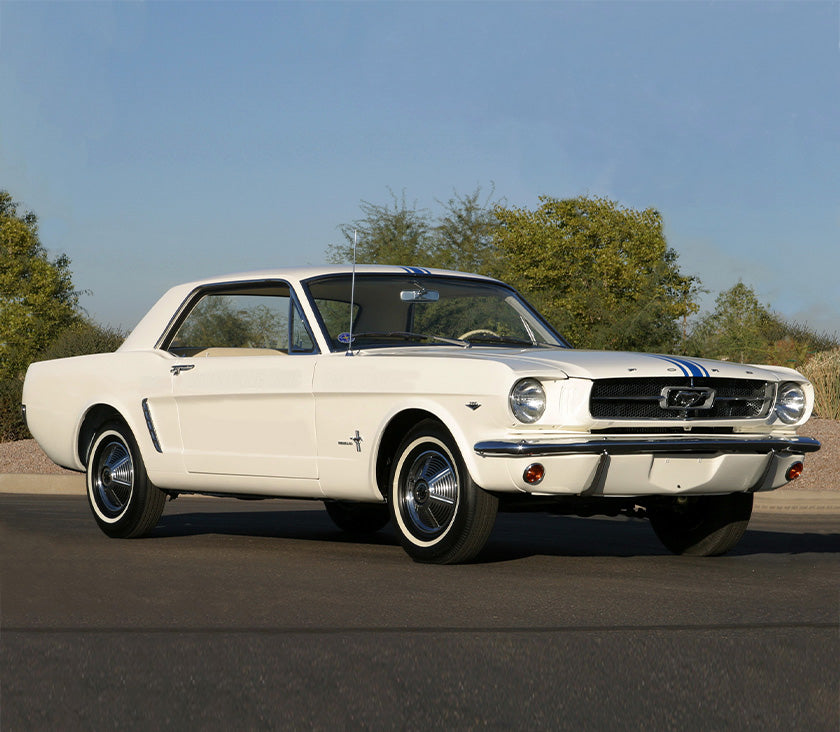
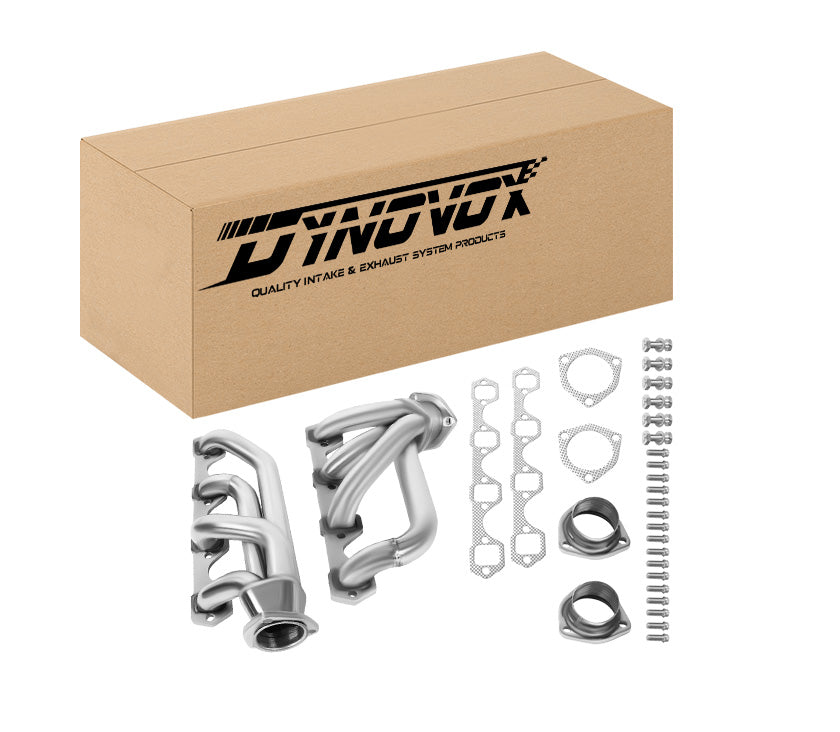
| Brand | DynoVox | SKU | QMP-HW00472 |
| Body Material | High Quality Stainless Steel | Color | Silver |
| Weight | 6.47kg | Comply with Factory Testing Standards | Yes |
| Type | Exhaust Header | Warranty | 3 Year |
| Surface | Mirror Polish |
| Installation Location | Engine |
| Item Condition | New |
NOTE
While anyone with basic mechanical knowledge can install an exhaust header, it is recommended that it be installed by a professional mechanic to ensure proper installation and avoid any potential problems.
DISCLAIMER
1. By installing this product onto your vehicle, you assume all risk and liability associated with its use.2. It is your responsibility to make sure your Vehicle complies with all federal, state, and local emissions laws. Federal and many state and local laws prohibit the removal, modification, or rendering inoperative of any part of the design affecting emissions or safety on motor vehicles used on a public street or highway Violation may result in a fine of up to $ 32,500 per vehicle ( or possibly higher depending on changes in the law ). All civil penalties and fines for removing your vehicle emissions equipment are the sole responsibility of the end user.3. Due to its high-performance nature, this product may void the vehicle manufacturer's warranty.4. DynoVox is not responsible for the misuse of its products By installing this product, you release DynoVox of any liability associated with its use.5. Depending on where you live, restrictions may apply. Check all applicable laws before installing or using.6. The purchaser and end-user release, indemnities, discharges, and holds harmless DynoVox from any claims, damages, causes of action, injuries, or expenses resulting from or relating to the use or installation of this product that is in violation of the terms and conditions on this page, the product disclaimer, and/or the product installation instructions. DynoVox will not be liable for any direct, indirect, consequential, exemplary, punitive, statutory, or incidental damages or fines caused by the use.







Frequently asked questions